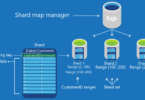Medical transcriptionists, or healthcare documentation specialists, listen to voice recordings and convert them into written documents. They work on portable computers, such as laptops, or fixed, like desktops.
They also use headphones to hear audio files clearly and avoid missing vital information. Using the latest technologies has helped them improve their work and make it faster.
Artificial Intelligence (AI)
The transcription industry has been experiencing rapid growth due to technological advancements. The technology has improved the efficiency of recording and transcription processes, resulting in greater productivity and cost savings for businesses. Moreover, the technology has also enabled companies to provide transcripts that are more accurate and easier to read.
For example, voice recognition software has improved accuracy by learning from human error. This allows for a more accurate transcript and reduces transcription time by up to three times compared to manual typing. It can also detect pauses and identify unique linguistic features, allowing transcribing video to text to focus on the most critical parts of the conversation.
However, it is still essential to use high-quality audio recordings to ensure that your transcripts are accurate. This means using a quality microphone and adjusting the recording settings to capture clear audio. Avoiding background noise and providing the transcripts are legible is also crucial.
Transcription is helpful for many industries. Journalists can use it to capture interviews quickly, podcasters can improve accessibility by providing show notes and transcripts, and media producers can boost search engine optimization (SEO) by adding transcriptions to their videos and audio.
Transcription is also vital for individuals with disabilities. Converting spoken content into text makes information and entertainment accessible to people who are deaf or hard of hearing non-native speakers, and those with varying language abilities. It can even help break down barriers to cultural and social interaction.
Machine Learning (ML)
Medical transcription is a multi-billion industry that is continually evolving. In the past, physicians would speak into dictation machines, then transcriptionists turned them into text. Now, technology is changing this process with speech recognition software. This allows doctors from across the globe to access patient data and collaborate on care plans. This is a significant shift in the way healthcare practices work. It also improves interoperability between physicians and other specialists or emergency providers, essential in delivering high-quality medical care.
Transcription is used in many fields, including business, law, media, and academics. It is a crucial process that can be performed manually by a professional transcriber or automatically using speech recognition software. Depending on the type of transcription, one or the other method may be more effective.
Speech recognition software offers much higher accuracy than manual transcription but could be better. A misplaced accent, poor recording settings, or background noise can still lead to inaccurate transcriptions. However, these limitations can be overcome by investing in quality microphones and adjusting recording settings to capture clear audio.
Business owners need to transcribe audio content for many reasons, including keeping records of meetings and implementing new strategies. Market research firms also use transcription to create a detailed customer feedback record, helping them better understand their customers’ needs and concerns. In addition, authors interview legends and famous personalities to write their biographies and transcribe those interviews.
Speech Recognition (SR)
SR enables users to control devices and systems by speaking rather than using buttons or typing. It’s a vital tool in many industries, including legal, medical, business, media, and academia. It also improves accessibility for Deaf and hard-of-hearing individuals and facilitates research analysis.
Despite the many advantages of SR, some challenges remain to be overcome. For instance, accuracy can drop if there is too much background noise or the user’s accent is difficult to identify. In such cases, noise-reduction microphones are often used. Similarly, a lack of familiarity with technical terminology can hinder transcription accuracy. In this case, specialized dictation software with custom models for each industry is recommended.
In addition, there are better ways to transcribe audio recordings than SR. A physician may have to wait for a transcriptionist to prepare their hospital patient report. This can be incredibly frustrating when they are trying to make a diagnosis on a patient.
However, the main benefit of SR is that it allows physicians to save time by avoiding the hassle of writing or typing endless reports. In addition, if front-end SR is integrated into the EHR, the doctor can submit their accounts immediately. This will allow them to decrease average report time and provide their patients with more timely service.
Natural Language Processing (NLP)
Natural Language Processing (NLP) is a subset of artificial intelligence that allows computers to read text, listen to speech, understand its meaning, and determine essential parts. It’s used in various applications, including automatic text summarization, sentiment analysis, named entity recognition, topic extraction, and part-of-speech tagging.
NLP makes it possible for businesses to gain advanced insights from analytics that were previously unobtainable. It allows them to get answers from data using language instead of numbers, making it easier for non-subject matter experts to use. It also creates structure from unstructured data, which helps companies identify trends and find solutions faster.
As a result of the COVID-19 pandemic, businesses have increased their investments in NLP technology. They focus on improving customer service, automating operations, and streamlining processes. This is driving the growth of the NLP market.
The NLP market is divided into segments based on component, type, deployment mode, organization size, application, technology, and vertical. The largest market segment is the large enterprise segment, which accounted for the highest revenue share in 2022. The market is expected to increase over the next five years.
The NLP industry is undergoing significant changes due to innovations and AI technology advancements. This is boosting the adoption of NLP technologies in various sectors, including transcription services.






